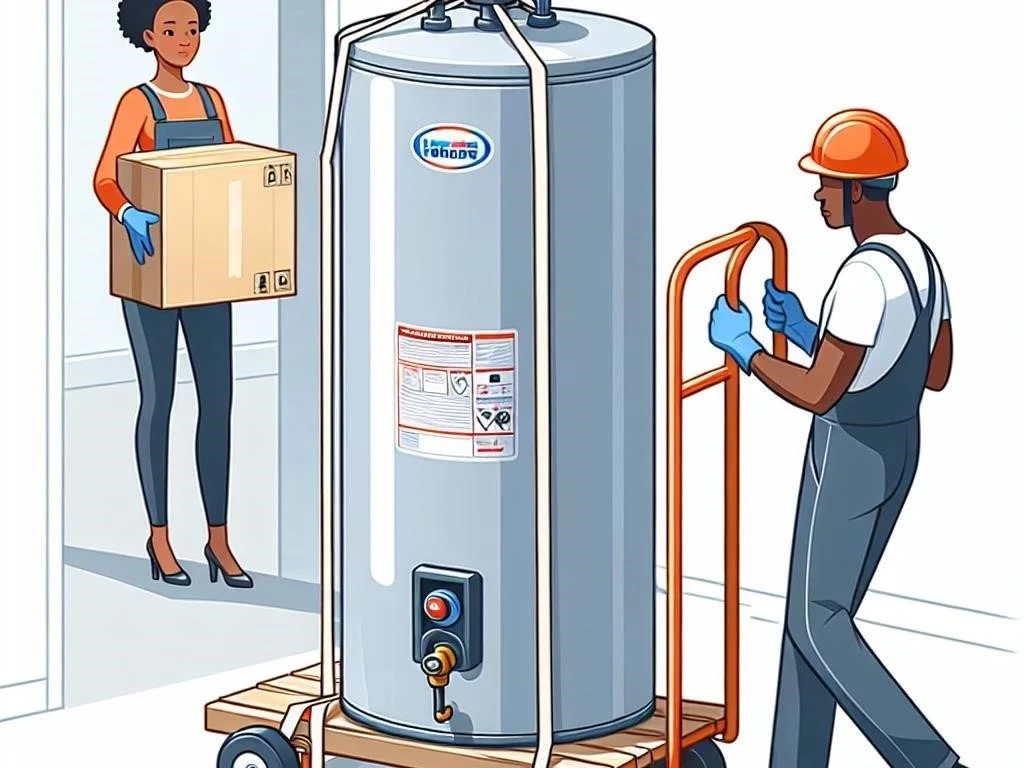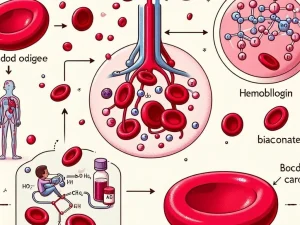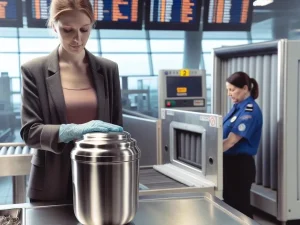How to Transport Cells Across Campus
Effective cellular transport requires meticulous planning, adherence to safety protocols, and proper handling techniques to ensure cell viability during interdepartmental transfers within academic institutions.
Cellular transport is crucial for research, involving the safe transfer of biological samples, ensuring compliance with safety protocols and maintaining cell viability throughout the process.
1.1 Importance of Cell Viability
Cell viability is essential in research, as it directly influences experimental outcomes and the integrity of biological samples. When transporting cells across campus, maintaining their viability ensures that laboratory procedures yield accurate results. Factors such as temperature control, environmental conditions, and handling techniques play critical roles in preserving cell health during transport. Researchers must be aware of the specific requirements for different cell types, as various biological samples may have unique needs for transport media and shipping containers. Failure to maintain viability can compromise experiments, leading to invalid conclusions. Therefore, adhering to safety protocols and effective transportation methods is vital for academic institutions to ensure successful cellular transport and reliable research findings.
1.2 Overview of Transportation Needs in Research Facilities
Transportation needs in research facilities encompass various aspects essential for maintaining the integrity of biological samples during transit. These needs include efficient campus logistics, ensuring timely specimen delivery across departments while adhering to safety protocols. Proper handling techniques must be employed to prevent damage to cells during transportation. Additionally, the use of specialized courier services can enhance the reliability of interdepartmental transfers. Research facilities must also focus on temperature control and environmental conditions to guarantee optimal cell viability. Understanding the specific requirements of different biological samples is crucial, as this knowledge informs the selection of appropriate shipping containers and transport media. Ultimately, a well-structured transportation plan is vital for successful research outcomes.
Understanding Biological Samples
Biological samples, including cell cultures and specimens, require precise handling and transportation methods to maintain integrity, viability, and compliance with laboratory safety protocols during transfer.
2.1 Types of Biological Samples
Various types of biological samples are utilized in research, each requiring specific transportation methods to ensure cell viability and integrity. Common samples include cell cultures, blood, tissue, and microbial specimens. Cell cultures are sensitive to environmental conditions; therefore, temperature control is crucial during transport. Blood samples often require specialized shipping containers that maintain sterility and temperature. Tissue samples must be handled delicately to prevent degradation, while microbial specimens necessitate strict adherence to biological safety protocols. Understanding the unique requirements of each sample type aids in selecting appropriate transport media and shipping containers. Proper classification and handling of biological samples during transportation significantly impact research outcomes and overall viability in laboratory settings.
2.2 Cell Culture Basics
Cell culture involves growing cells in controlled environments, essential for research and experimentation. Understanding cell culture basics is vital for successful transportation. The process begins with selecting appropriate culture media that supports cell growth and viability. During transportation, maintaining optimal temperature, usually between 2°C and 8°C, is crucial to avoid cellular stress. Additionally, using suitable shipping containers helps protect cells from mechanical damage. When preparing cells for transport, researchers must ensure that cultures are healthy and actively dividing for optimal recovery upon arrival. Proper documentation of the cell type, passage number, and specific handling instructions is essential. Following these guidelines facilitates successful interdepartmental transfers, ensuring that research facilities achieve reliable and reproducible results.
Campus Logistics for Specimen Delivery
Effective campus logistics ensure timely specimen delivery, coordinating transportation routes, and utilizing appropriate courier services to maintain cell viability and compliance with safety protocols.
3.1 Planning for Interdepartmental Transfer
Effective planning for interdepartmental transfer is essential to ensuring the safe transport of cells across campus. This process begins with identifying the specific requirements of the biological samples involved, including temperature sensitivity and handling techniques. Coordinating with both sending and receiving departments helps establish clear communication regarding timing and logistics. Utilizing specialized courier services that understand the nuances of specimen delivery enhances reliability. Additionally, researchers should prepare detailed documentation outlining sample types, expected environmental conditions, and any necessary safety protocols. Incorporating a contingency plan for unexpected delays further safeguards cell viability. Ultimately, thorough planning minimizes risks, promotes efficient transportation, and ensures the integrity of biological samples throughout the transfer process.
3.2 Role of Courier Services in Campus Transportation
Courier services play a pivotal role in campus transportation, particularly for the timely and secure delivery of biological samples. These specialized services are trained to handle sensitive specimens, ensuring adherence to strict safety protocols and maintaining optimal environmental conditions. With expertise in temperature control and packaging requirements, couriers help preserve cell viability during transit. Their established logistics streamline the process of interdepartmental transfers, facilitating efficient communication between sending and receiving laboratories. Additionally, courier services can provide real-time tracking, allowing researchers to monitor the status of their samples. By utilizing reliable courier services, academic institutions enhance the overall reliability of specimen delivery, contributing to the success of ongoing research efforts.
Laboratory Procedures for Cell Transport
Laboratory procedures for cell transport involve meticulous planning, appropriate handling techniques, and strict adherence to safety protocols to maintain cell viability throughout the transportation process.
4.1 Handling Techniques for Biological Samples
Proper handling techniques for biological samples are crucial to maintaining the integrity and viability of cells during transportation. First, researchers should ensure that all personnel involved are trained in appropriate handling protocols. Utilizing sterile gloves and tools minimizes contamination risks. When preparing samples for transport, gentle pipetting techniques should be employed to avoid shear stress that can damage cells. Additionally, samples must be securely sealed in appropriate shipping containers to prevent leaks or spills. It is essential to label all samples clearly with pertinent information, including type, date, and sender details. Finally, minimizing the time samples spend outside controlled environments can significantly enhance their viability during transport across campus.
4.2 Ensuring Temperature Control During Transport
Ensuring temperature control during transport is vital for preserving cell viability and preventing cellular stress. Researchers should first identify the optimal temperature range required for specific biological samples, typically between 2°C and 8°C for many cell types. Utilizing insulated shipping containers equipped with ice packs or dry ice helps maintain the desired temperature throughout the journey. Employing temperature monitoring devices, such as data loggers, enables real-time tracking of environmental conditions, providing valuable information if temperature fluctuations occur. It’s essential to minimize the time samples spend outside temperature-controlled environments during loading and unloading. By implementing these measures, researchers can significantly enhance the likelihood of successful transport and reliable experimental outcomes for their biological samples.
Shipping Containers and Transport Media
Shipping containers and transport media are crucial for maintaining cell viability during transport, ensuring protection against environmental factors and preserving the integrity of biological samples.
5.1 Selecting Appropriate Shipping Containers
Selecting appropriate shipping containers is essential for the safe transport of biological samples across campus. Containers must be designed to maintain optimal temperature and protect specimens from physical damage. Insulated containers, such as foam boxes or specialized biohazard containers, are often used to ensure temperature stability. Additionally, the size of the container should accommodate the samples securely, preventing movement during transit. It’s crucial to choose leak-proof and puncture-resistant containers, especially when transporting liquid samples. Clear labeling is also important to indicate contents and any specific handling requirements. By carefully selecting shipping containers, researchers can enhance the security and viability of biological samples, significantly contributing to successful experimental outcomes in laboratory settings.
5.2 Importance of Transport Media for Cell Viability
Transport media play a crucial role in maintaining cell viability during transit, providing essential nutrients and a stable environment for cells. The choice of transport media should be tailored to the specific needs of the biological samples being transported, as different cell types have varying nutrient requirements. Properly formulated media can help reduce metabolic stress and prevent cell death during transport. Additionally, the use of media that maintains pH and osmotic balance is vital for preserving cellular integrity. Researchers must ensure that the selected transport media are compatible with the cells and can withstand the anticipated environmental conditions during transit. Ultimately, the right transport media significantly enhances the success rate of research endeavors involving biological samples.
Environmental Conditions During Transportation
Maintaining appropriate environmental conditions during transportation is critical for preserving cell viability, ensuring stability, and protecting biological samples from temperature fluctuations and physical disturbances.
6.1 Factors Affecting Cellular Transport
Several factors significantly affect cellular transport, influencing the viability and integrity of biological samples during transit. Temperature fluctuations are a primary concern, as cells often require specific conditions to remain healthy. Extended exposure to extreme temperatures can lead to cellular stress or death. Additionally, the duration of transport plays a critical role; longer transit times increase the risk of deterioration. Environmental conditions, such as humidity and vibration, can also impact sample stability. The type of shipping container and its insulation properties directly affect how well samples withstand external conditions. Furthermore, handling techniques during loading and unloading can introduce additional stress to cells. Understanding these factors is crucial for successful cellular transport across campus.
6.2 Monitoring Environmental Conditions
Monitoring environmental conditions during the transportation of biological samples is vital for ensuring cell viability and maintaining sample integrity. Utilizing temperature monitoring devices, such as data loggers, allows researchers to track real-time changes in temperature throughout the journey. These devices can provide alerts if temperatures deviate from the designated range, enabling swift action to mitigate potential damage. Humidity sensors can also be employed to monitor moisture levels, which can impact certain samples. Additionally, implementing a clear protocol for documenting environmental conditions during transport helps create a comprehensive record, aiding in the assessment of sample integrity upon arrival. By proactively monitoring these conditions, researchers can enhance the reliability of their cellular transport processes and research outcomes.
Safety Protocols in Cell Transportation
Implementing safety protocols during cell transportation is essential for protecting personnel, ensuring compliance with regulations, and maintaining the integrity of biological samples throughout the process.
7.1 Biological Safety Considerations
Biological safety considerations are paramount when transporting cells across campus to protect both personnel and the environment. First, it is essential to classify biological samples according to their risk level, as this determines the necessary containment measures. Utilizing certified biohazard containers helps prevent leaks and contamination during transit. Personnel should be trained in handling procedures, ensuring they wear appropriate personal protective equipment (PPE) such as gloves and lab coats. Additionally, labeling samples with hazard warnings and relevant safety information is crucial for informing anyone who may come into contact with the samples. Regular reviews of safety protocols and compliance with institutional and regulatory guidelines further enhance safety, ultimately minimizing risks associated with transporting biological materials.
7.2 Compliance with Laboratory Safety Guidelines
Compliance with laboratory safety guidelines is essential for the safe transport of cells across campus, ensuring the protection of personnel and the integrity of biological samples. Researchers must familiarize themselves with institutional, local, and federal regulations regarding the transport of hazardous materials. This includes understanding the classification of biological samples and the appropriate packaging requirements. Proper documentation, including shipping manifests and safety data sheets, should accompany all transported materials. Additionally, staff must adhere to established protocols for handling and transportation, including the use of appropriate personal protective equipment (PPE) and secure containment methods. Conducting regular training sessions and audits helps reinforce compliance, ensuring that all personnel remain informed of current safety practices and guidelines.
Best Practices for Transporting Cells Across Campus
Implementing best practices for transporting cells involves careful planning, adherence to safety protocols, proper handling techniques, and selecting appropriate containers to ensure successful delivery.
8.1 Preparing Cells for Transport
Preparing cells for transport is a critical step that ensures their viability and integrity throughout the journey. Begin by selecting the appropriate cell culture media tailored to the specific needs of the cell type being transported. Prior to packing, thoroughly assess cell density and health, as only healthy cells should be transported. Gently centrifuge the cell suspension to concentrate the cells, then resuspend them in transport media to prevent exposure to unfavorable conditions. Utilize sterile techniques to avoid contamination during this process. Securely package the cells in temperature-controlled shipping containers, ensuring they are well labeled with relevant information. Finally, document all necessary details to facilitate smooth interdepartmental communication and compliance with safety protocols during transportation.
8.2 Efficient Campus Transportation Strategies
Implementing efficient campus transportation strategies for cell transport is essential to ensure timely arrival and maintain viability. First, establish a well-defined route that minimizes travel time while avoiding areas prone to temperature fluctuations. Utilize dedicated courier services familiar with biological materials to enhance reliability and safety during transit. Scheduling regular transport times can help streamline the process, reducing delays. Communication between sending and receiving departments is vital; employing a tracking system allows for real-time updates on sample status. Additionally, training staff on proper handling and transportation protocols ensures that everyone involved is prepared to manage potential challenges. By incorporating these strategies, academic institutions can optimize cellular transport while safeguarding valuable research materials;
9.1 Recap of Key Points
Recapping the key points of successful cell transport across campus highlights several critical considerations. First, maintaining cell viability requires careful attention to environmental conditions such as temperature and humidity during transit. Utilizing appropriate shipping containers and transport media ensures samples remain stable. Compliance with laboratory safety guidelines protects both personnel and biological materials. Effective planning and communication between departments facilitate timely interdepartmental transfers. Training staff in proper handling techniques minimizes contamination risks. Monitoring environmental conditions during transport enables proactive responses to potential issues. By implementing these strategies, researchers can enhance the reliability of their cellular transport processes, ultimately leading to successful research outcomes and advancements within academic institutions.
9.2 The Future of Cellular Transport in Academic Institutions
The future of cellular transport in academic institutions is poised for significant advancements driven by technology and innovation. Emerging technologies such as automated transport systems and smart shipping containers equipped with IoT capabilities can enhance monitoring and control of environmental conditions during transit. Additionally, the integration of artificial intelligence can optimize routing and scheduling, improving efficiency in specimen delivery. As interdepartmental collaborations increase, the development of standardized protocols across institutions will facilitate smoother transfers and enhance the reliability of biological sample handling. Furthermore, increased awareness of safety and compliance measures will promote best practices in cellular transport. Collectively, these advancements will lead to improved outcomes in research and foster innovation within the scientific community.














Post Comment